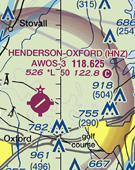Advice Heeded
This year is my 45th year as a pilot. In that time, I have benefited greatly from the advice and guidance of many experienced pilots. Recently I unpacked all of my old log books and went through them, enjoying the memories of my career and the reminder of some memorable flights. The most enjoyable part was recalling the names of many of the pilots I flew with and who eagerly helped me avoid possible disaster with their advice and observation. Most of them are gone now, but their advice is as valuable now as it was 40 years ago. In their memories, I would like to pass on some of the sage bits of advice they gave me.
One of earliest ones concerned entering the traffic pattern. As a new private pilot, I was confused by the best way to enter the pattern when approaching from an awkward direction. His advice was plain and simple: “avoid crossing the departure path of the runway and, as soon as possible, start making turns in the direction of the pattern,” i.e., if it is a left-hand pattern, start making left turns as soon as possible. This has stuck with me for years. Whenever I approach an airport, I plan to enter the pattern with that advice in mind. It may not always be the conventional recommended way, but it works and, in my opinion, is safer than some of the other recommendations.
Another occurred on an IFR trip in the early days of radar, before transponders. In this case I was the copilot and inexperienced instrument pilot. We were given a handoff to a radar controller from a non-radar environment. We contacted the receiving controller, who said “radar contact over XYZ intersection.” Now my captain was an airline captain who dated back to the DC-2 days. His immediate response was “that’s not us, we are approaching ABC intersection.” The distance between the two fixes was approximately 20 miles. A brief conversation with the controller finally convinced him we were right and he was wrong. The lesson learned was that situational awareness is of prime importance in any flight. Again, it has stuck with me to this day. Even with the great strides in radar coverage, I still want to know where I am at all times. If the controller and I disagree, it is time for some conversation and resolution.
Another great piece of advice came when I first got checked out in a multiengine airplane. On landings my instructor kept pounding into me airspeed, airspeed. Well, I was maintaining the proper airspeed, but I had to use considerable power to do it, with the result that I was dragging the airplane in; then when I got over the runway and reduced the power, it fell out from under me and landed with a hard thunk. One of my mentors watched a few landings like this and could not take it any longer. He got into the airplane and gave me this great piece of advice: “When on final, you want to be up coming down.” In other words, the proper airspeed should be achieved by a low power setting and proper attitude. It proved to me that the airplane’s attitude on final is just as important as the airspeed. To this day I seldom look at the airspeed on final as long as I have the proper nose down attitude.
Here are a few more tidbits:
- When leaning the mixture for cruise flight, do it on one magneto. Then when you go back to both, you can be reasonably sure you are not too lean.
- Cruise at high power settings. This provides better cooling because of the way the factory sets the cooling baffles. High power settings wear an engine out. Low power settings lead to high temperatures and this is what breaks engines. You want your engine to wear out, not break.
I wish I could take credit for these ideas, but the credit belongs to a bunch of wonderful pilots I have had the opportunity to fly with. I hope I have kept their memories alive.
But please keep one thing in mind: These are suggestions and not absolutes. If you don’t like them, you won’t hurt my feelings by ignoring them.


